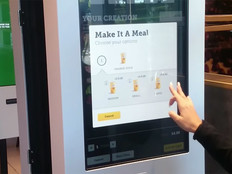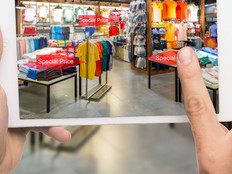Retailers Need to Balance Tech Innovations with a Human Touch, Study Suggests
Retailers have a bevy of technologies to choose from as they update their stores and back-office functions. They can turn to cloud and data analytics platforms to predict demand and ensure they have the right inventory in stock, or they can embrace digital kiosks and mobile payments to attract younger shoppers.
However, a recent study suggests that while it is important for retailers to invest in IT solutions, and technology decisions can influence customers’ buying habits, tech for tech’s sake is not enough to win over customers. In an age when prices can be compared and orders placed via smartphones, customers still want human interactions in stores, the study suggests.
The “Retail Perceptions” report, released last month by Interactions, the retail solutions and experiential marketing unit of retail branding and sourcing firm Daymon, surveyed more than 1,000 adult shoppers, and it found that while 84 percent expect retailers to use technology to improve the shopping experience, 62 percent prefer to be greeted in-store by a real person.
“Consumers want both digital and human interfaces today. They desire the integration of technology into their shopping experience, but nothing can truly replace the accessibility of a traditional store associate,” Interactions President Bharat Rupani says in a statement. “The key for retailers is to balance human interaction with technology to streamline and compliment the consumer’s overall retail journey.”
Consumers Embrace Retailers That Use Tech
The survey suggests that shoppers’ behaviors can be influenced by retailers that use IT solutions to communicate with them, as 57 percent of consumers say they spend more money at stores that send them mobile notifications, though 70 percent prefer to receive such notifications at home.
“Retailers have the opportunity to influence purchase decisions through a consistent stream of communication, leading to unplanned purchases and motivation to visit a physical store or website,” Interactions notes in its release. Indeed, 68 percent of those surveyed say that notifications have led them to make an unplanned purchase.
In terms of other technologies, consumers seem eager to make use of personalization and 3D printing to create customized products in a shorter time frame, according to the survey. Strikingly, 95 percent of shoppers surveyed say they are looking forward to purchasing products created through 3D printing, and nearly 79 percent of shoppers say they are inclined to spend more at a retailer that can help them create their own products through 3D printing.
Retailers Can’t Forget the Human Element
The survey is a reminder that no matter which or how much technology retailers add to their stores, customers still want sales associates to interact with them and help them through the purchasing process.
Only 25 percent of those surveyed say they prefer to rely solely on technology to help them answer questions while shopping at physical retail stores. Just 41 percent prefer to include tech as a part of their in-store sampling experience.
One area where consumers want to increase their use of tech at stores? At checkout. Just 10 percent say they want a store associate as part of their checkout process.
Interactions says the survey was conducted in March 2017 with a representative sample of men and women ages 18-64 across all geographies, income levels and ethnicities within the United States.









